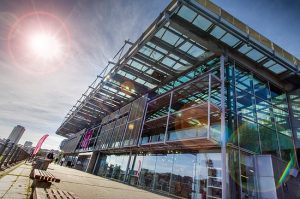Lucy Hart writes for Beacon Collaborative about the current level of philanthropic funding for women and women-facing initiatives and asks what we can do to increase it.
“Control F”
In May, the 2022 Sunday Times Giving List was published. As a nonprofit consultant, this is a pretty handy one-stop guide for an overview of who is giving and where in the UK. A quick “control F” of “gender” and “women” throws back one result for “gender equality” (thank you, Sir Chris Hohn) and for “women”, three.
Out of 120. Really? Really?
Of course, there’s a caveat: women’s issues and gender both come under many other philanthropic giving areas, like education, health and so forth. Understand me: I hasten to suggest only four donors give to these two causes. But alarm bells indubitably ring.
I am currently re-reading Can We All Be Feminists? by June Eric-Udorie. In it she writes:
“to those women with privilege, this is what we need from you: Organise with us, but let us be the authority on our own experiences and in our activism. Don’t speak for us – we can speak for ourselves”.
Firstly, I highly recommend this book as a starting point to verse yourself with the challenges facing, and debates within, feminism today. And secondly, acknowledge my position of privilege.
For those unfamiliar with the term intersectionality, it’s Kimberle Crenshaw’s “attempt to make feminism, anti-racist activism, and anti-discrimination law do what I thought they should – highlight the multiple avenues through which racial and gender oppression were experienced so that the problems would be easier to discuss and understand”.
In other words, Western feminism as many of us have known it, has too long been centred on the white, middle-class experience and it’s a truth we must live by and correct.
With this in mind: I am overwhelmed by the cacophony of voices speaking on “women’s issues”, and yet: where are the funds?
Back in August 2021 I gave my two cents on my hopes for the future of philanthropy in Alliance Magazine’s 25th anniversary edition. In it I referred to the 2020 The Women and Girls Index figure showing that just 1.6 per cent of philanthropic giving in the US goes to women and girls’ organisations.
So, what are we going to do about it?
And here lies feminist philanthropy. A philanthropic form that “encourages individuals and corporations to think more deeply not about who they donate to, but why they’re donating”. By adopting a feminist lens, philanthropy might look towards the margins and, for that matter, be far more transformative.
I deeply admire the work of Global Fund for Women. They’re a feminist fund with an intersectional lens. Back in 1987, four bold women: Anne Firth Murray, Frances Kissling, Laura Lederer and Nita Barrow were frustrated by a lack of interest in funding women’s human rights, so they founded an organisation to fund grass-roots women-led movements directly.
As a feminist funder, they actively shift the power to historically marginalized communities including women, girls, and gender non-conforming people. Flexible funding and resources move directly into the hands of feminist activists who know exactly how to use it.
As a non-profit consultant who works to build the capability, capacity and coherence of socially-focused organisations, it would be remiss not to say that we can help. The funders are out there, but finding the right ones? That’s the challenge. Often, funds are poured into issues “in vogue”, but let us not forget: women do comprise half the human race.
Our clients fight every day against poverty, racism, violence, environmental injustice, lack of education, misinformation and the dismantling of quality journalism, and encroachments on democracy. I would love to see more organisations tackling gender and women’s issues walk through our door. So, I say, come on in and let’s talk.
Afterword: Is change coming?
In November 2020, the Bill & Melinda Gates Foundation, the largest philanthropic organization in the world, appointed their first-ever President of Gender Equality, Anita Zaidi. She leads the Foundation’s efforts to achieve gender equality by integrating gender across the Foundation’s global work. If such an influential funder has taken this step, is change coming?


 From an economic standpoint, we need a society that puts arts and culture at the heart of its towns and cities. There is nothing ‘nice to have’ about the arts and the creative industries. Arts and Culture are central to our economy, our public life and our nation’s health. Cultural and creative industries are typically labour-intensive, employing people in the community and creating jobs that cannot be done anywhere else. They increase footfall and spending not only in the cultural activity itself but also around it. With the decline of high street retail as the main driver of towns and cities it is more important than ever to encourage, develop and fund cultural venues and cultural activities in our towns and cities.
From an economic standpoint, we need a society that puts arts and culture at the heart of its towns and cities. There is nothing ‘nice to have’ about the arts and the creative industries. Arts and Culture are central to our economy, our public life and our nation’s health. Cultural and creative industries are typically labour-intensive, employing people in the community and creating jobs that cannot be done anywhere else. They increase footfall and spending not only in the cultural activity itself but also around it. With the decline of high street retail as the main driver of towns and cities it is more important than ever to encourage, develop and fund cultural venues and cultural activities in our towns and cities.
 NewcastleGateshead Quayside is a good example of the successful pursuit of regeneration through active intervention. Prior to the Quayside redevelopment, the area was severely depressed, lacking attractions for visitors and suffering economically as a result. The Baltic Flour Mills, now repurposed as
NewcastleGateshead Quayside is a good example of the successful pursuit of regeneration through active intervention. Prior to the Quayside redevelopment, the area was severely depressed, lacking attractions for visitors and suffering economically as a result. The Baltic Flour Mills, now repurposed as  The growth of Nissan and out-of-town call centres did much to reduce mass unemployment but did little for a city centre blighted by low footfall, a poor retail offer (competing with out of town shopping malls) and limited cultural attractions. By 2010 about one-third of the city’s retail properties were empty and the
The growth of Nissan and out-of-town call centres did much to reduce mass unemployment but did little for a city centre blighted by low footfall, a poor retail offer (competing with out of town shopping malls) and limited cultural attractions. By 2010 about one-third of the city’s retail properties were empty and the  For many years, the
For many years, the